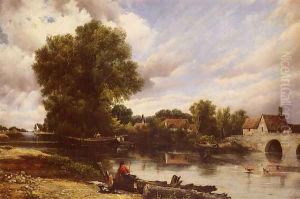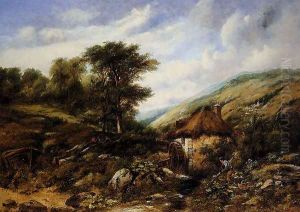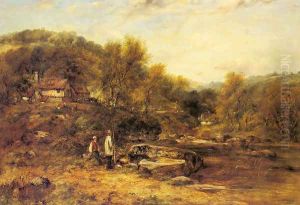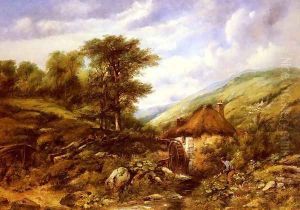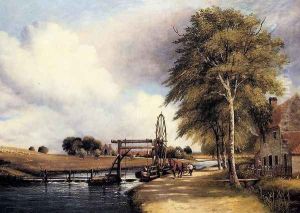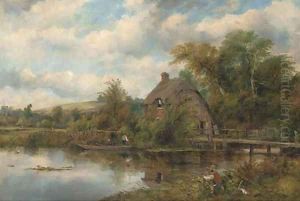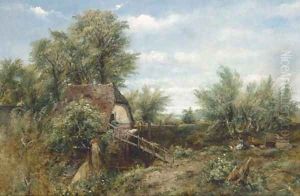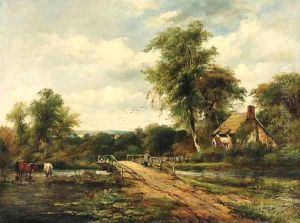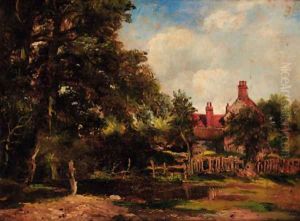Frederick William Watts Paintings
Frederick William Watts was an English landscape painter, born in Bath, England, in 1800. During his lifetime, Watts made a significant contribution to the art of landscape painting, a genre that was increasingly appreciated in the 19th century amidst the rise of Romanticism. His works, characterized by their meticulous detail, atmospheric effects, and serene depiction of the English countryside, reflect the influence of the Romantic movement, as well as the earlier works of the Dutch masters.
Watts began his artistic career at a relatively young age, showing an early talent for drawing and painting. Although not much is documented about his formal education in art, it is known that he worked and developed his skills in the traditional apprentice manner, which was common for artists of his time. Over the years, Watts traveled extensively across England, capturing the diverse landscapes, from the rugged coastlines to the tranquil rural settings. These journeys played a crucial role in shaping his approach to landscape painting, allowing him to explore and depict a wide range of natural scenes with authenticity and depth.
Throughout his career, Frederick William Watts exhibited his works at various prestigious venues, including the Royal Academy and the British Institution. His paintings were well-received by critics and the public alike, praised for their poetic quality and the artist’s ability to convey the sublime beauty of nature. Despite his success, Watts remained relatively conservative in his style, focusing on the traditional aspects of landscape painting and rarely venturing into the more experimental techniques that some of his contemporaries were beginning to explore.
Watts's legacy is that of a dedicated landscape artist who captured the essence of the English countryside with great skill and sensitivity. His works continue to be admired for their beauty, technical proficiency, and the peacefulness they evoke, serving as a testament to Watts’s lifelong devotion to the natural world. He passed away in 1870, leaving behind a rich body of work that continues to be celebrated for its contribution to the English landscape tradition.
